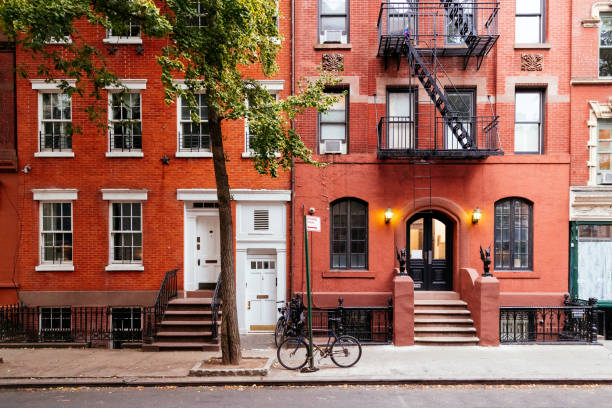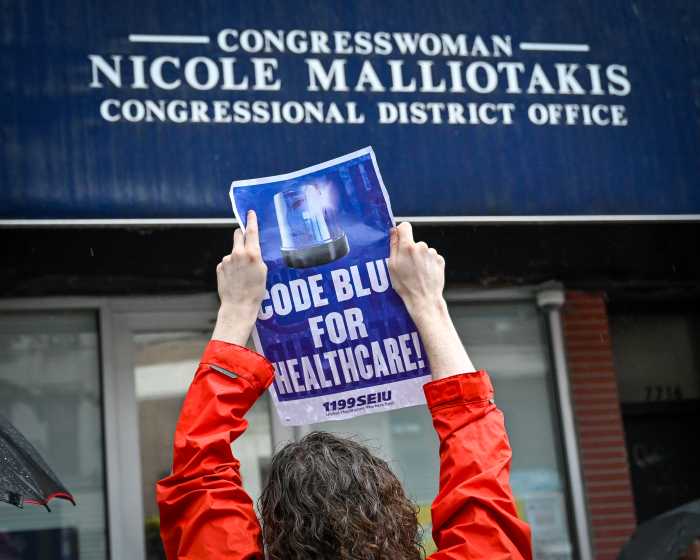By Lesley Sussman
A long and bitter 43-year stalemate over future development of a 7-acre parcel of land at the foot of the Williamsburg Bridge came to a successful conclusion this Monday when Community Board 3’s Land Use, Zoning, Public and Private Housing Committee voted almost unanimously to approve a set of general guidelines that would pave the way for action on the long-dormant Seward Park Urban Renewal Area, or SPURA.
The historic 20-to-1 vote marked the end of two years of contentious debate over details of the general guidelines by members of the committee. The approval of the guidelines signaled to the Bloomberg administration that area residents and stakeholders have finally reached some kind of consensus and are now ready to get down to details about the site’s development.
Tuesday night, the measure went before C.B. 3’s full board at its monthly meeting, which unanimously seconded the committee’s vote, giving the board’s final approval. The guidelines now will get sent to various city agencies for further tweaking.
Under the guidelines, about 1,000 housing units would be built at the site, roughly half of which would be allocated to middle- and low-income individuals, along with retail shops, green space and, possibly, a new school and nursing home for the elderly.
Over the years, various city administrations had shied away from developing the empty swath of land — which is currently used as open-air parking lots on the south side of Delancey Street and is the largest site of undeveloped city-owned land in Manhattan south of 96th Street — because of the fierce disagreement that has surrounded it. The property fell idle more than 40 years ago after the wholesale razing of blocks of residential buildings by the city for a never-completed urban renewal plan
The committee’s Monday night action drew immediate praise from several political leaders and strong condemnation from one public member of the committee — Damaris Reyes — who also serves as executive director of Good Old Lower East Side a neighborhood housing and preservation group.
G.O.L.E.S. has been demanding that 70 percent of the new units be allocated for affordable housing for low- and moderate-income families and for senior citizens.
But the new guidelines, worked out by committee members and local residents — who for the past two years have been struggling to come up with an income-mix formula for any housing to built on the site — calls for only 50 percent affordable housing and, the rest, to be market-rate units.
Reyes told reporters after the marathon three-and-a-half hour meeting — during which committee members continued arguing until the last minute over the proposal’s language and other details — that she was “deeply disappointed” by the committee’s vote.
“There are a lot of good points to this plan and a lot of strong efforts were made,” she said. “But in the end, I think we should have seized this opportunity to restore the units of affordable housing that have been lost in this neighborhood over the last 40 years.
“I’m not disappointed that we’re finally doing something with this land, but I’m deeply disappointed by the percentages,” Reyes added. “They’re not reflective of the needs of this neighborhood. They’re not reflective of what a majority of the people who spoke tonight wanted.”
Also issuing statements — but in strong support of the new guidelines — were Assembly Speaker Sheldon Silver, who, over the years, has been perceived as opposing developing the site for predominantly low-income housing, and state Senator Daniel Squadron.
In his written statement, Silver said: “I want to commend the leadership and members of the Community Board 3 Land Use, Zoning, Public and Private Housing Committee for their effort to achieve, at long last, a true consensus about the future of Seward Park. From the outset, this process was conducted openly, transparently and fairly and went to great lengths to give voice to the broad range of views that make up our extraordinarily diverse community.
“While there were, at times, deep and principled disagreements among stakeholders, I believe that ultimately this process brought our community together,” Silver said. “The final guidelines that were approved by the committee tonight strike an appropriate balance between the needs and concerns of all stakeholders and will result in a development that will ensure our neighborhood continues to thrive.”
In his written statement, Squadron said: “The community board vote is a huge win for the community. It is appropriate that after 43 years, a community-driven process has moved SPURA forward. Over the last few months, I was honored to work with members of the committee, community members and my colleagues in government — Speaker Silver, Councilmembers Chin and Mendez, and Mayor Bloomberg — to support an open and productive process that will lead to real results.”
Councilmember Margaret Chin, whose district also includes SPURA, issued the following prepared statement: “I applaud the SPURA Development Task Force [committee] for reaching a consensus on the proposed guidelines for the development of the Seward Park Urban Renewal Area. After 43 years, I am pleased to say that the guidelines that will shape the future development of the area were derived, in large part, from the surrounding community. Community Board 3 members and residents spent countless hours envisioning what type of development would be the most beneficial for such a diverse community. This process not only brought the community together but laid the groundwork for the near unanimous vote achieved yesterday. I want to thank the chairperson of Community Board 3, Dominic Pisciotta, and C.B. 3 District Manager Susan Stetzer, and in particular Task Force Chairperson David McWater. … This vote has shown both the diversity of the Lower East Side and the strength of unity in this neighborhood.”
Chin added, “I would also like to commend my colleagues in government for their support of the process, and in particular, Assembly Speaker Sheldon Silver for his prompt statement of support last night. I will continue to work on behalf of the community to obtain the resources that will move this project forward while ensuring a variety of housing options that meet the needs the community as a whole.”
In a statement of her own, Congressmember Nydia Velázquez said, “The Lower East Side has always drawn its strength from the neighborhood’s diversity. It is therefore fitting that the Seward Park area’s future is being determined through an open and inclusive process, which takes into account the views of local residents. These guidelines represent a big win in the fight for affordable housing and true compromise that balances the community’s many competing needs.”
The standing-room-only Tuesday evening meeting, at the Henry Street Settlement’s Youth Gym, 301 Henry Street, was attended by nearly 300 residents along with a large contingent of G.O.L.E.S. supporters, who, at times, demonstrated their displeasure with committee members by extended clapping of hands, cheers, jeers and catcalls.
Before the committee got down to its historic vote, more than a dozen local residents addressed the committee, most of them advocating for more affordable housing units on the site rather than market-rate ones, for the development of parks and open space, and the preservation of the Essex Street Market, which is being included in the SPURA redevelopment plan and is at risk of being razed.
Ed Delgado, a former SPURA resident whose family lived there 43 years ago and who hopes to be allowed to move back when the site is redeveloped, told the jampacked meeting that he was pleased by the guidelines.
“I never thought a day would come when we could sit down and speak to each other,” he said. “If we don’t speak to each other, the only ones who will have a voice in the development of this site are people with money.”
However, Luther Stubblelfield, vice president of the Baruch Houses Tenants Association, sounded a more angry note.
“It was a shame that the city and the mayor are constantly focusing on money and high rents,” he said. “If that happens to this site, even retired police officers and firefighters couldn’t afford to live here.”
After residents had their chance to speak, John Shapiro — the hired facilitator for the committee’s SPURA process — and committee members got down to business. They heard from committee chairperson Dave McWater, who said that while this was a “watershed moment” in the development of the SPURA site, “it’s not the final moment.”
McWater noted there is still a long way to go before the dream of development comes true.
“Right now, we just want to make sure our basic tenets are here,” he said. “We still have to hear from various city agencies.”
McWater said the site’s development would result in affordable housing for 1,500 people, jobs for 600 to 700 local residents and opportunities for home ownership, more open space and even a new school.
“With this plan we have a compromise — and it’s a good one,” said McWater, a former chairperson of the community board.
Current C.B. 3 Chairperson Dominic Pisciotta also spoke in support of the consensus guidelines.
Committee member Joel Kaplan, executive director of the United Jewish Council of the Lower East Side, previously had spoken in support of more market-rate — rather than affordable — housing on the site. But on Monday night he backed the consensus guidelines.
Kaplan told this newspaper after the meeting that the vote was “a victory for everybody. I think the overwhelming vote in favor of the guidelines was indicative that most people felt this was the best way to move forward,” he said.
After the vote, Pisciotta praised the committee members’ for the process and historic vote.
“It’s been more than 42 years in trying to find a compromise,” Pisciotta said. “I want to acknowledge the hard work committee members have put in the past two years. This is a tremendous first step. Now we need to take the next step and get down to more details.”
























